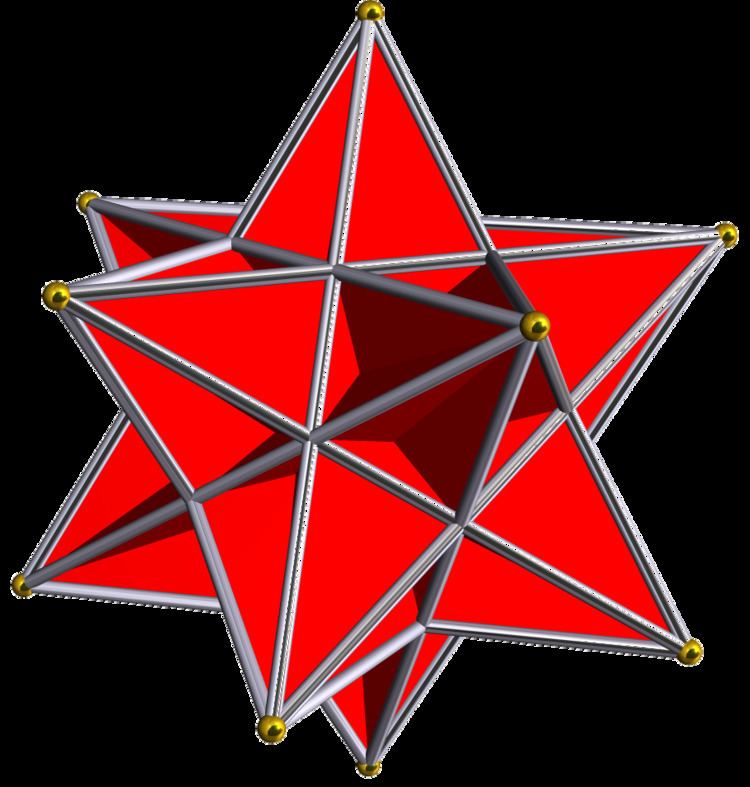 | ||
In geometry, the great icosahedron is one of four Kepler-Poinsot polyhedra (nonconvex regular polyhedra), with Schläfli symbol {3,5/2} and Coxeter-Dynkin diagram of . It is composed of 20 intersecting triangular faces, having five triangles meeting at each vertex in a pentagrammic sequence.
Contents
As a snub
The great icosahedron can be constructed a uniform snub, with different colored faces and only tetrahedral symmetry: . This construction can be called a retrosnub tetrahedron or retrosnub tetratetrahedron, similar to the snub tetrahedron symmetry of the icosahedron, as a partial faceting of the truncated octahedron (or omnitruncated tetrahedron): . It can also be constructed with 2 colors of triangles and pyritohedral symmetry as, or , and is called a retrosnub octahedron.
Related polyhedra
It shares the same vertex arrangement as the regular convex icosahedron. It also shares the same edge arrangement as the small stellated dodecahedron.
A truncation operation, repeatedly applied to the great icosahedron, produces a sequence of uniform polyhedra. Truncating edges down to points produces the great icosidodecahedron as a rectified great icosahedron. The process completes as a birectification, reducing the original faces down to points, and producing the great stellated dodecahedron.
The truncated great stellated dodecahedron is a degenerate polyhedron, with 20 triangular faces from the truncated vertices, and 12 (hidden) doubled up pentagonal faces ({10/2}) as truncations of the original pentagram faces, the latter forming two great dodecahedra inscribed within and sharing the edges of the icosahedron.
